Class 9 History Chapter 2 Question Answers - Socialism in Europe and the Russian Revolution
Q1. Differentiate between the ideas of the liberals and radicals in Europe (take the time period after the French Revolution).
Ans: The liberals did not believe in the universal franchise. In contrast, radicals wanted a government that represented the majority of the population. Liberals felt men of prosperity mainly should have the vote. They did not want the vote for women.
On the other hand, the radicals supported women’s suffragette movements and opposed the privileges of great landowners and wealthy factory owners. They were not against the existence of private property but disliked the concentration of property in the hands of a few.
Q2. Why do we say that liberals during this time could not be called ‘democrats’?
Ans: They could not be considered true democrats because they did not support universal adult franchise. They believed that only men who owned property should have the right to vote and excluded women from voting rights. Thus, their idea of political participation was limited, and not in line with the democratic principle of equal rights for all citizens.

Q3. How should society, according to liberals and radicals, develop?
Ans: Liberals and radicals believed that society should develop through the following key principles:
- They were often property owners and employers who gained wealth from trade and industrial ventures.
- They advocated for the encouragement of economic efforts, believing that a healthy workforce and educated citizens would lead to greater profits.
- They supported the idea that societies could progress if:
- The poor were allowed to work.
- Individual freedoms were protected.
- Those with capital could operate freely. - Many working-class individuals joined liberal and radical groups seeking change in the early nineteenth century.
While liberals focused on individual rights and a representative government, radicals aimed for broader participation and supported movements like women's suffrage.
Q4. Why were socialists against private property and saw it as the root of all social ills?
Ans: Socialists opposed private property, viewing it as the source of many social problems. Their key arguments included:
- Property owners often prioritised personal gain over the welfare of workers.
- They believed that if society controlled property, it would focus more on collective interests.
- Socialists argued that this shift would lead to better living conditions for everyone.
Ultimately, they campaigned for a system where property was owned collectively, ensuring that the needs of the community were met.
Q5. Describe the incident known as ‘Bloody Sunday’.
Ans: On January 22, 1905, about 150,000 workers in St. Petersburg went on strike. They demanded:
- Reduction of working hours to eight hours
- Increase in wages
- Improvement in working conditions
The peaceful procession was led by Father Gapon towards the Winter Palace. The police and Cossacks fired on the unarmed crowd, killing over 100 workers and wounding around 300. This event became known as ‘Bloody Sunday’. It sparked widespread anger and led to the 1905 Revolution in Russia.
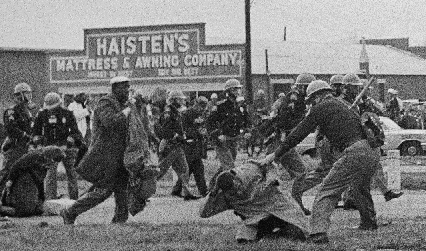 Bloody Sunday
Bloody Sunday
Q6. What effect did the war have on the industry of Russia?
Ans: The war had a significant impact on Russian industry:
- Russia had few industries, and German control of the Baltic Sea cut off access to essential industrial goods.
- Industrial equipment deteriorated more quickly in Russia than in other parts of Europe.
- By 1916, many railway lines were breaking down, disrupting transport.
- Able-bodied men were conscripted into the army, leading to labour shortages.
- Many small workshops that produced essential goods were forced to shut down.
Q7. Why was the decision to collectivise farms taken?
Ans: The decision to collectivise farms was made due to several reasons:
- Rich peasants and traders were believed to be hoarding grain, anticipating higher prices, which led to a shortage.
- Stalin argued that the small size of individual farms contributed to this shortage.
- It was thought that these small farms could not be modernised.
- To address these issues, there was a push to develop larger, modern farms using machinery and industrial methods.
Thus, collectivisation aimed to create state-controlled large farms to improve agricultural efficiency.
Q8. “By the 1950s it was acknowledged within the country that the style of government in the USSR was not in keeping with the ideals of the Russian Revolution.” Why was this said?
Ans: By the 1950s, it was clear that the style of government in the USSR did not align with the ideals of the Russian Revolution. Key reasons for this include:
- Russia transformed from a backward nation into a significant power.
- Industries and agriculture improved, leading to better food supply for the poor.
- However, the government denied essential freedoms to its citizens.
- Development was achieved through repressive policies rather than democratic means.
Q9. What was the role of the Tsar in the peasant revolt of 1905? Did the revolt fail? Discuss briefly.
Ans: The Tsar played a repressive role during the 1905 peasant revolt. Due to widespread unrest, he allowed the formation of an elected consultative parliament called the Duma.
However, he dismissed the first Duma within 75 days and the second within three months, as they challenged his authority. He changed voting laws to ensure that only conservative supporters were elected. The third Duma was packed with his loyalists, excluding liberals and revolutionaries.
Yes, the revolt failed, as the Tsar retained absolute power and suppressed political opposition.
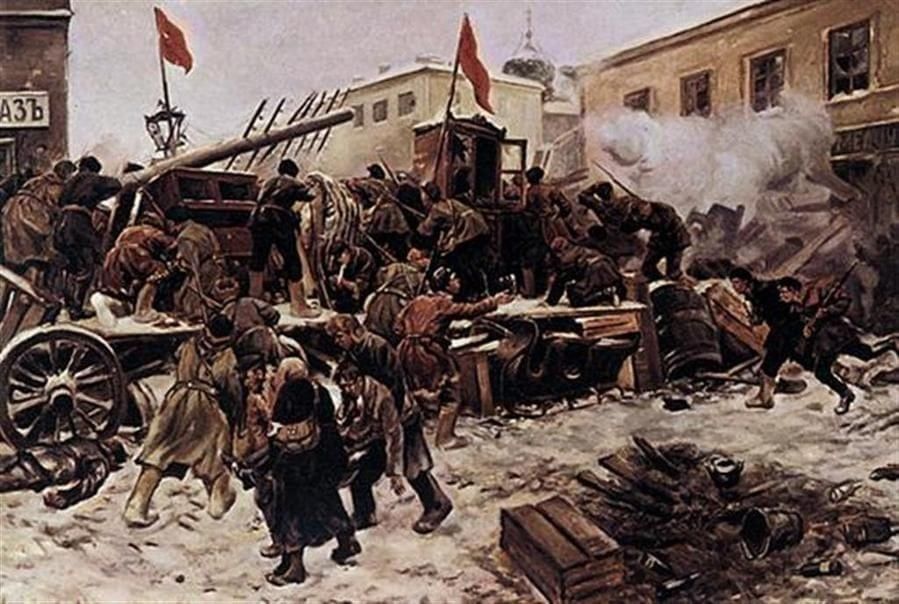 Russian Revolution of 1905
Russian Revolution of 1905
Q10. Discuss the civil war that took place in Russia after the October Revolution and its consequences.
Ans: After the October Revolution of 1917, a civil war broke out in Russia between the Bolsheviks (Reds) and their opponents — Whites (pro-Tsarists), Greens (Socialist Revolutionaries), and foreign powers like Britain, France, Japan, and the USA. The war lasted from 1918 to 1920. The opposition aimed to overthrow the Bolsheviks but lacked unity and popular support. Harsh measures by the Whites on peasants led to further resistance. The war caused widespread famine, looting, and destruction. By 1920, the Bolsheviks regained control over most of Russia. As a result, they strengthened their rule, centralised planning, and laid the foundation for a one-party communist state.
 October Revolution
October Revolution
Q11. Discuss briefly the Five Years Plans.
Ans: A process of centralised planning was introduced in the Soviet Union, where officials evaluated the economy and set targets for a five-year period. This led to the creation of the Five Year Plans. Key points include:
- The government fixed all prices to encourage industrial growth.
- The first two plans (1927-32 and 1933-38) resulted in significant economic progress.
- Industrial production, particularly in oil, coal, and steel, increased by 100% between 1929 and 1933.
- New factory cities emerged, but rapid construction often resulted in poor working conditions.
Q12. Explain why did the Bolsheviks considered the Russian Revolution as only the “first stage” of the revolution.
Ans: The Bolsheviks considered the Russian revolution as only the ‘first stage’ of revolution because merely seizing power was not their ultimate aim. They aimed at an egalitarian society. The next stage of the revolution included the redistribution of land, nationalisation of industries and banks, collective farming. Rich peasants had to be forced to redistribute land. Their ultimate aim was to establish the rule of the proletariat – the peasants and workers.
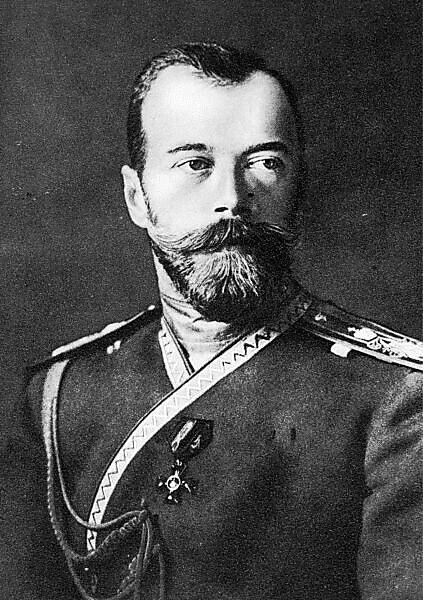
Q13. Why did the Tsarist autocracy collapse in 1917?
Ans: Anti-German sentiments were prevalent in Russia during this period. Key factors that contributed to the collapse of the Tsarist autocracy in 1917 include:
- The renaming of St. Petersburg to Petrograd reflected growing anti-German feelings.
- Tsarina Alexandra's German origins and her poor advisors, particularly Rasputin, diminished the autocracy's popularity.
- By 1917, Russia faced devastating losses in World War I, with over seven million casualties and three million refugees.
- Food shortages led to widespread riots as bread and flour became scarce.
- The loyalty of the large Russian army shifted towards the revolutionaries, ultimately leading to the collapse of Tsarist power.
Q14. Mention the demands of the workers who went on strike at St. Petersburg in 1904.
Ans: In 1904, workers in St. Petersburg went on strike following the dismissal of four members of the Assembly of Russian Workers. Their key demands included:
- A reduction of the working day to eight hours.
- An increase in wages.
- Improvements in working conditions.
Over 110,000 workers participated in this industrial action, highlighting the urgent need for change.
Q15. What was the impact of the First World War on the Russian economy?
Ans: The First World War had a significant impact on the Russian economy:
- Large quantities of grain were diverted to feed the army.
- This led to severe shortages of bread and flour in cities.
- By 1916, riots over bread became common, especially in Leningrad.
- A harsh winter worsened conditions for workers.
- The resulting economic crisis contributed to the Revolutions.
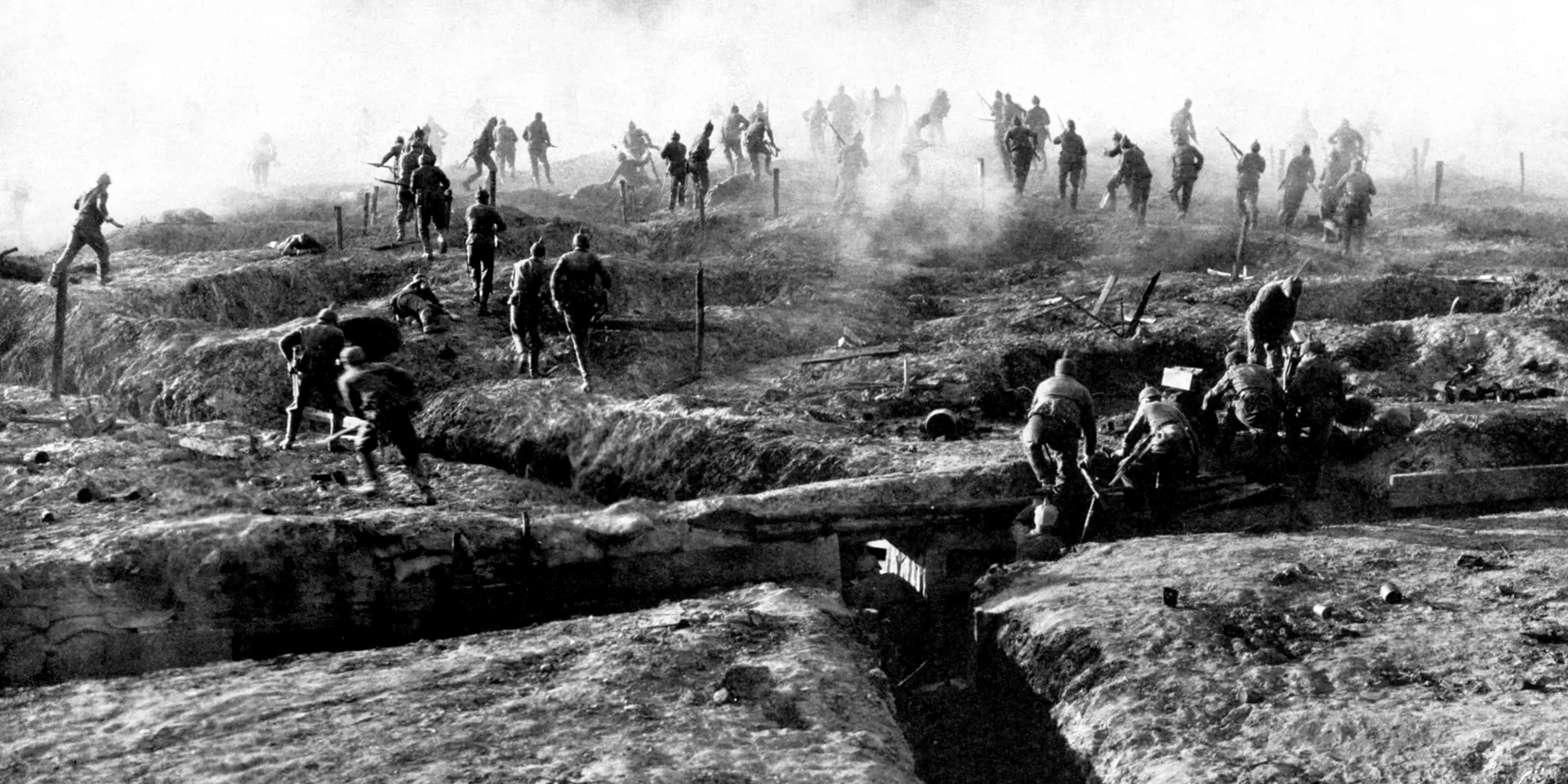
Q16. Mention the important steps taken by Lenin to improve the agriculture and economy of Russia.
Ans: Important steps taken by Lenin to improve agriculture and economy in Russia:
- Nationalised most industries and banks.
- Ordered land redistribution to peasants.
- Allowed peasants to cultivate socialised land.
- Introduced centralised planning for the economy.
- Fixed prices during the first two plans to boost industrial growth.
- Increased production of oil, coal, and steel.
- Developed an extended schooling system for workers and peasants.
- Established communes where members shared resources and income.
Q17. Why socialists were against private property?
Ans: Socialists opposed private property because they believed it was the root of many social problems. They argued that:
- Property ownership led to exploitation, as owners employed others primarily for their own profit.
- Workers who contributed to the production of goods were not adequately supported or compensated.
- Control of property should belong to the entire community, not just individuals.
- This collective ownership would prioritise the welfare of society over individual interests.
Thus, socialists campaigned for a system where property was managed for the benefit of all.
Q18. What was Lenin's April Theses? Why were some members of the Bolshevik Party surprised by the April Theses? What made them change their attitude? What were the main objectives of the Russian Revolutionaries?
Ans: The three demands of Vladimir Lenin, after his return to Russia in April 1917, were:
(i) He and the Bolsheviks had opposed the war since 1914. He felt in 1917 that it should be brought to a close.
(ii) Land should be transferred to the peasants.
(iii) The banks should be nationalised and the party should be renamed "Communist Party". These three demands were called Lenin's "April Theses".
Most of the members of the Bolsheviks were initially surprised as they thought the time was not yet ripe for a socialist revolution and the provisional government needed to be supported. In the countryside, peasants pressed for redistribution of land, and encouraged by the socialist revolution's ideas peasants seized land between July and September 1917. This led to the change of view and the Bolsheviks decided to seize power.
Q19. Mention any two changes introduced by Stalin in the Russian economy. How did Stalin deal with the critics?
Ans: The following changes were introduced by Stalin:
- Elimination of kulaks: Stalin targeted wealthy farmers, confiscating their land to establish state-controlled farms.
- Collectivisation of land: All peasants were required to work on collective farms (kolkhoz), sharing the profits generated from these farms.
Stalin dealt with resistance from peasants harshly. Those who opposed collectivisation were often punished severely, including deportation and exile. Critics of his policies were accused of conspiracy against socialism.
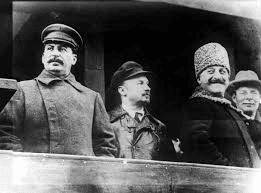
Q20. What steps were taken to improve the condition of factory workers and peasants in Russia after the Civil War?
Ans: After the Civil War, several measures were implemented to enhance the conditions of factory workers and peasants in Russia:
- Bolsheviks nationalised industries and banks. They socialised land, allowing peasants to cultivate it. This was a demonstration of collective work using confiscated land.
- Centralised planning was introduced, meaning that economic decisions were made by officials who set five-year goals.
- New factories were established, and a schooling system was created, enabling factory workers and peasants to attend universities.
- To support women workers, crèches were set up for their children.
- Affordable public health services were arranged, and living quarters were provided for workers.
Q21. Discuss the relationship between peasants and nobles in Russia during the early 19th century.
Ans: In early 19th century Russia, the relationship between peasants and nobles was marked by tension and conflict:
- The nobility, along with the Crown and the Orthodox Church, owned vast estates.
- Unlike their French counterparts, Russian peasants held little respect for the nobles.
- Many peasants desired the land owned by nobles and often refused to pay rent, leading to violent confrontations, including instances of murder against landlords.
- In 1902, significant peasant unrest erupted in southern Russia, spreading nationwide by 1905.
- Peasants formed communes (mir) that allocated land based on the needs of individual families.
Q22. What were the different notions of Liberals, Radicals, and Conservatives regarding the formation of the new Government in Russia? Discuss.
Ans: Liberals opposed the unchecked power of dynastic rulers. They aimed to:
- Protect individual rights against government interference.
- Establish a representative, elected parliamentary system.
- Ensure an independent judiciary, though they did not support universal suffrage.
Radicals sought a government reflecting the majority's will. Their views included:
- Opposition to the privileges of wealthy landowners and factory owners.
- Support for women's suffrage and a more equitable distribution of property.
Conservatives resisted both liberals and radicals, believing:
- In gradual change, respecting historical traditions.
- That societal transformation should occur slowly, rather than through abrupt shifts.
Q23. What were the three main changes observed after the October Revolution in Russia?
Ans: The three main changes observed after the October Revolution in Russia are:
- Nationalisation: Most industries and banks were nationalised in November 1917, meaning the government took control of their ownership and management.
- Land Reform: Land was declared social property, allowing peasants to seize land from the nobility.
- Urban Reorganisation: Large houses in cities were divided according to family needs, and old aristocratic titles were abolished. New uniforms were introduced for the army and officials.
Q24. Why socialists were against private property?
Ans: Socialists opposed private property, viewing it as the cause of many social problems. Their key arguments included:
- Property was owned by individuals who prioritised personal gain over the welfare of workers.
- They believed that if society collectively controlled property, it would focus more on social interests.
- Socialists aimed to change this system and advocated for collective ownership.
|
55 videos|525 docs|78 tests
|
FAQs on Class 9 History Chapter 2 Question Answers - Socialism in Europe and the Russian Revolution
| 1. What were the main ideas of socialism in Europe during the 19th century? |  |
| 2. How did the Russian Revolution of 1917 contribute to the spread of socialism? |  |
| 3. Who were the key figures in the development of socialist thought in Europe? |  |
| 4. What were the social and economic conditions in Europe that led to the rise of socialism? |  |
| 5. What role did the Russian Revolution play in shaping modern socialism? |  |

















